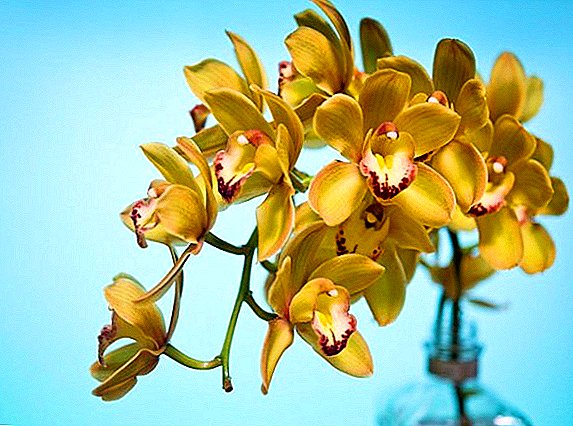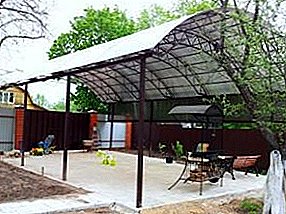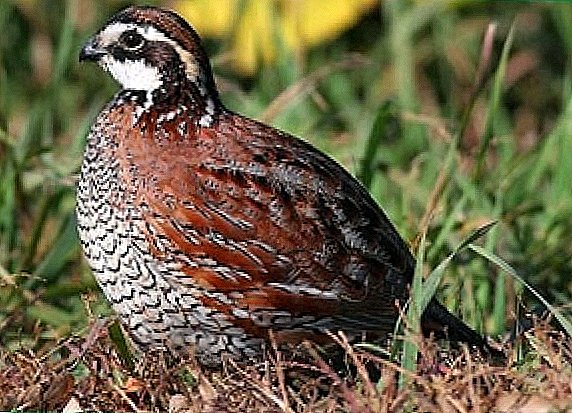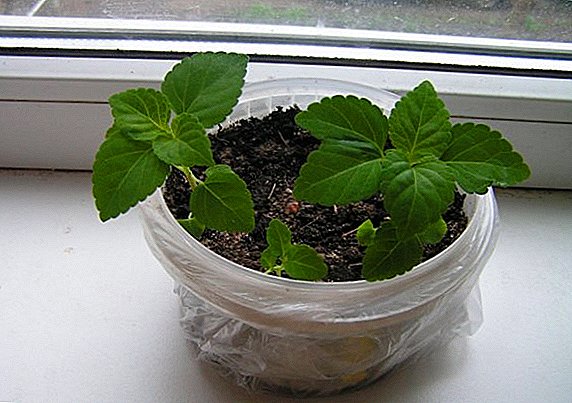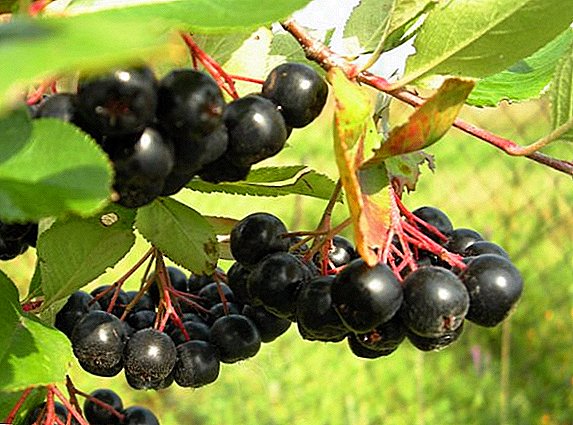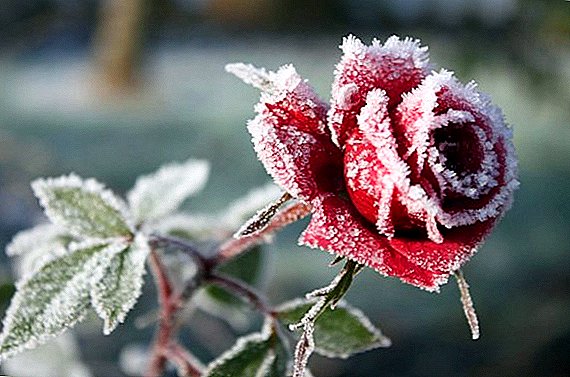 Many fans of home rose gardens are deeply convinced that with the onset of cold weather every bush needs warming, and in the spring they complain about poor material and dead plants.
Many fans of home rose gardens are deeply convinced that with the onset of cold weather every bush needs warming, and in the spring they complain about poor material and dead plants.
What is the reason for the unfavorable wintering of roses, how and what it is better to hide for the winter - you will learn about all this further from the article.
And also for you, we have prepared a selection of tips for choosing a covering means and a technique for protecting hybrids from frost.
Rose and winter hardiness
Often in the spring, rose growers face two problems: the bushes are frozen or strayed out. Experts explain these phenomena with improperly selected covering material for roses, illiterate hilling of hardy plants, or too thick layers of “fur coat”. In addition, a big mistake is the insulation of all successive varieties and species.
Did you know? The oldest, and therefore winter-hardy, is considered to be a rose bush growing in the German town of Hildesheim, near Hanover. Local old-timers say that the locality has grown around this plant. Prelude to this were the relics of the Virgin Mary on the branches of a blossoming rose, left during the hunt by Charles the Great's son Louis I. All attempts to remove them failed. Therefore, it was decided to place a temple on the site, which has survived to the present day. But the whip flower has already caught up with the roof of the cathedral. Until now, they are rampant lush buds and are a reminder of the city.
 Preparing the rose garden for winter should be done at the end of the summer. But for a start, experts advise to decide on the winter-hardy characteristics of bushes growing in a flower bed. After all, each of them requires special conditions for wintering.
Preparing the rose garden for winter should be done at the end of the summer. But for a start, experts advise to decide on the winter-hardy characteristics of bushes growing in a flower bed. After all, each of them requires special conditions for wintering.Remember that young saplings that have not yet wintered, regardless of their genetic predispositions, need outside help. It consists in special pruning, weatherization of the trunk and branches. Mature plants, which are highly resistant to low temperatures, do not need these procedures at all. They only hurt.
Each rose variety — Mary Rose, Graham Thomas, Double Delight, Pierre de Ronsard, Sophia Loren, Falstaff, Pink Intuition, Blue Perfume, William Shakespeare — has its own wintering characteristics, so it is important to study the characteristics of the variety before planting.The most winter-hardy professionals call park roses, as well as the works of English breeders with the everyday name "bastards". They are not afraid of cold weather and tolerate harsh weather conditions. Consequently, covering material is not needed at all.
But hybrid teas and climbing species are considered to be the most sensitive to temperature extremes. If there are such specimens in your garden, then they will not live without special training until spring. 
Important! For the successful wintering of roses in the last weeks of August, it is recommended to minimize watering and stop feeding with nitrogen-containing substances. From this period, the bush requires periodic addition of a phosphorus-potassium solution, which accelerates the lignification of young branches and the central trunk.The stunted varieties and Floribunda roses turned out to be more stable compared to the previous group. They need to be warmed, but it is important not to overdo it with protective structures. Otherwise, the plant will die not from cold, but from heat.
If you find it difficult to determine a particular group of rose bushes in your flower bed, do not despair. In such situations, experienced growers are advised to take care of peat or humus mulch around the stem of the plant and to provide a fabric shelter for the aerial part of roses for the winter.
Such activities will protect the culture from excess moisture and contribute to the formation of a suitable microclimate. The main thing is to guess the period when the need for warming arises. After all, too early structures will harm to the same extent, as belated ones. 
Choosing covering material
The most common mistake of many beginning flower growers is a very tight wrapping of flower stalks in a covering material. Although on the forums, newcomers, even unaware of their mistake, often complain about the quality of the purchased insulation.
But experts say that for a successful wintering bushes of these beautiful flowers do not need additional costs. Shelving roses for the winter is quite possible to implement improvised means. Let us analyze in more detail which of the materials is better to prefer.
Did you know? In England, the tradition of giving a declaration of love to give 2 yellow roses is still preserved, and white buds are symbols of eternal love. That is why brides all over the world prefer to see these flowers in wedding bouquets.
Purchased
From the store assortment to prepare the plants for the winter fit plastic film. It is the most common and affordable insulation. Experts advise this material for more sensitive varieties, since it, when loosely wrapped, retains the inner layer of air and does not interfere with the oxygen exchange processes. A similar effect can be achieved from geotextile, spunbond, lutrasil. The only drawback of these substances is the financial cost of their purchase.
A similar effect can be achieved from geotextile, spunbond, lutrasil. The only drawback of these substances is the financial cost of their purchase.
How best to hibernate Roоватьoza’s roses, Dutch, wrinkled, ground cover can be found by reading the care guidelines.
Improvised means
In preparing the rosary for the winter, many rose growers, with the aim of saving, resort to a suitable covering material for plants. In this case, the spruce leaves, fallen leaves, sawdust, peat, sand, rags, worn burlap are used.
And for hybrids that are very afraid of the cold, often use old blankets, plywood and wooden houses, foam plastic. The main task of the hostesses is reliable protection of the root system and flower stalks from adverse weather conditions. For resistant varieties, it is enough to bend the branches and warm them with scraps of coniferous trees. But sissies need a denser "fur coat."
Important! For the shelter of pink bushes need to stock up on fresh dry foliage. Wet material will destroy the plants.

Types of shelter
Experts highlight several technologies for insulating plants against cold weather, but in all cases they emphasize the need to leave an air cushion between the stems and insulation. Consider the main features of each type.
Air dry
Experts advise this method for non-winter-resistant hybrid tea roses and Floribunda. Its advantage is a stable temperature and excellent ventilation. Under the material, the thermometer column below 4 degrees of frost never falls. In addition, the chances of root loss are low. Let's look at how to cover the roses with the air-dry method.
In practice, everything turns out to be very simple: you need to prepare a frame of metal rods and some insulation. Asgamin, lutrasil and even regular cardboard can play its role. To the wind did not reveal your structure, it is desirable to secure the material securely with a string. And the house will be saved from moisture by polyethylene, which it is necessary to cover it from above. Bottom edge of the shelter must sprinkle with earth. 
Did you know? The famous Egyptian queen Cleopatra went down in history not only as an indescribable beauty, but also as a zealous fan of roses. For all the solemn events held with her participation, banquet halls were prepared, where the floors were thickly carpeted with petals of these flowers. In special cases, flooring reached half a meter height. Moreover, during the walks to the gallery, the queen loved to enjoy budding on the waves.
Shield
There is nothing more suitable for climbing roses. Compared to other groups of flowers, they are the last to shed their leaves and require special attention before the onset of cold weather. During this period, it is important to trim the remaining cuttings with leaf plates, as well as young shoots, remove the lash from the supports and tie them. Then, on the ball of lapnik spreading near the bush, you need to put the bundle formed and pin it firmly to the ground with a bent rod.
When the plant is fixed in a lying position, it is covered on both sides with wooden shields on top of it to form a triangle. The dimensions of the building must correspond to the length of the branches and be at least 85 cm wide. The lower edges of this house must be fixed with wooden pegs, otherwise it will disperse with time. From above the construction is covered with a film, including from the end sides. Before the onset of frost its edges need to be raised, which will ensure good ventilation and will not allow the roots to warm up. And before the first frost do not forget to lower the polyethylene and sprinkle it with the bottom of the soil.
The lower edges of this house must be fixed with wooden pegs, otherwise it will disperse with time. From above the construction is covered with a film, including from the end sides. Before the onset of frost its edges need to be raised, which will ensure good ventilation and will not allow the roots to warm up. And before the first frost do not forget to lower the polyethylene and sprinkle it with the bottom of the soil.
Important! Pink whips in preparation for the winter should be tilted in the direction of their growth. In some cases, at the base of the shoots, it is recommended to supply oval non-metallic supports, which will allow the branches to bend down smoothly.This technology is very convenient for warming climbing varieties arranged in rows. But in the case of warm winters, it is important to control the temperature and airflow inside the house.
Some flower growers talk about the impracticality of shield-type weatherization of plants, explaining their position by the lack of space in a small flower bed. For such situations, experts advise the associated pink branches to fix a column to the wooden supports stuck into the soil.  Some owners make special pyramidal skeletons of metal rods, but in such cases it is better to avoid direct contact with the lash of the bush. From above, the construction is wrapped with fiberglass, spond, agrofibre or ordinary sacking, fixing the web with bundles. And after that cover polyethylene film. At the same time, ventilation passages should be left, otherwise the flower will die from overheating.
Some owners make special pyramidal skeletons of metal rods, but in such cases it is better to avoid direct contact with the lash of the bush. From above, the construction is wrapped with fiberglass, spond, agrofibre or ordinary sacking, fixing the web with bundles. And after that cover polyethylene film. At the same time, ventilation passages should be left, otherwise the flower will die from overheating.
Did you know? Muslims are very kind to roses. Since ancient times, they believe that these flowers are the gift of Allah, and do not allow anyone to stomp their petals with their feet.
Shelter jute bags
Jute bags are best used for standard varieties of flowers growing in open ground. To this end, after the ground in the near-circle wheel is loosened and covered with a layer of mulch, the crown is warmed with a full-bodied dry foliage or lapnik sack cover.
First, a canvas without bottom is put on the crown, after which it is tied at the starting point of the growth of the branches. Then it is tightly stuffed with filler and tied up. Boles are hidden in burlap or wrapped with spruce branches.
If we are talking about specimens that are rooted in tubs and are only taken out for the season in the garden, they are sent to the cellar for the winter. 
Basic rules for shelter
Than to cover the roses for the winter, besides the spruce branches, we found out, walking along the basics of different technologies, and now let us dwell in more detail on the key rules for preparing rosaries for winter.
Regardless of which heater and method of its use you prefer, it is important to carry out a set of preparatory work. It starts when the bushes shed their leaves.
The first thing to do is cut from the plant damaged, dry and underdeveloped branches. It is also important to remove the remaining foliage, because pathogenic microorganisms and pests are very likely in the half-dead cuttings. So that the shrub does not suffer from fungal and bacterial diseases, it is recommended to spray it with the preparation "Fundazol" or "Maxim".
Did you know? Ancient Roman warriors considered it an honor when instead of a helmet their head was covered with a wreath of pink buds. This flower has long symbolized victory, strength and courage. This headdress was called "chapel". And, according to linguists, the Ukrainian word "kapelyuh" came from it.Hygiene of stalk wells is also important. First you need to get rid of weed crops, then remove the remnants of old mulch and fallen leaves. Only after the performed manipulations can we proceed to the weatherization of the root system and the crown of the plant.
If you take into account the peculiarities of rose varieties, preparation and warming will be carried out correctly, your flowers will survive until spring in the safety and security. But do not take shelter as a panacea. This is just one of many ways to protect the bushes from the cold. In addition, it is effective only with complex preparation, which begins with irrigation, fertilizing and soil care.





